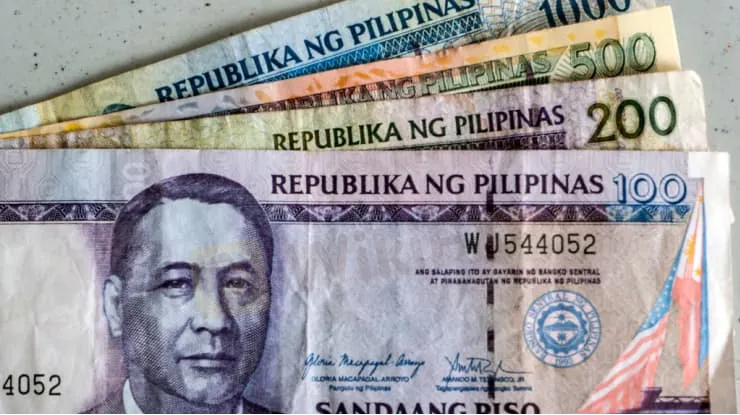简体中文
繁體中文
English
Pусский
日本語
ภาษาไทย
Tiếng Việt
Bahasa Indonesia
Español
हिन्दी
Filippiiniläinen
Français
Deutsch
Português
Türkçe
한국어
العربية
Asias best-performing currency is partly supported by a weak economy
Abstract:Falling imports as a result of a weak domestic economy have ended up benefiting the Philippine peso, which has strengthened around 4% against the U.S. dollar to become Asia’s best performer so far this year.
Asias best-performing currency is partly supported by a weak economy
Falling imports as a result of a weak domestic economy have ended up benefiting the Philippine peso, which has strengthened around 4% against the U.S. dollar to become Asias best performer so far this year.
The steeper fall in imports compared to exports has helped to flip the Philippines current account into surplus, which has proven to a boon to the currency, said economists.
Over the longer term, a reopening of the Philippine economy and resumption in imports could cause the currency to weaken, according to analysts from Fitch Solutions.

SINGAPORE — The Philippines falling imports as a result of a weak domestic economy have ended up benefiting its currency — which is the best performer in Asia so far this year.
The Philippine peso has strengthened around 4% against the U.S. dollar this year, outperforming its regional peers. It is also one of the few Asian currencies that has recorded gains versus the greenback, alongside the Chinese yuan and Taiwanese dollar.
A collapse in demand for imports came after the Southeast Asian country went through one of the world‘s longest and strictest lockdowns to contain the coronavirus. The fall in imports was steeper than exports, which proved to be a boon to the currency as it flipped the Philippines’ currency account into surplus, said economists.
Current account measures a countrys total transactions with the rest of the world, including imports and exports of goods, cross-border investments, as well as transfers such as foreign aid.

“The continued fall in imports translates into subdued demand for foreign currency and will likely lead to short term support for PHP,” said Nicholas Mapa, senior economist for the Philippines at ING, referring to the abbreviation for the Philippine peso.
“The Philippine Peso continues to outperform regional peers as the country posts a current account surplus year-to-date in 2020, due mainly to the substantial drop-off in imports, and we can expect this trend to continue going into 4Q 2020,” he wrote in a Thursday note.
Such surplus and continued foreign buying of Philippine bonds contributed to a surge in the countrys foreign currency reserves, which help to shield the economy against external shocks — another development supporting the strength in the Philippine peso, according to economists.
The Philippine economy has been badly hit by the strict lockdown to slow the spread of the coronavirus disease. It registered one of Asias worst contractions in the second quarter after shrinking by 16.5% on a year-on-year basis — its first recession in nearly three decades.
The countrys more than 248,900 cumulative reported cases of Covid-19 are the highest in Southeast Asia, data compiled by Johns Hopkins University showed. Of those, at least 4,066 have died, according to the data.
Currency strength could fade
In the near term, a contested U.S. presidential election outcome could put pressure on the Philippine peso, analysts from Fitch Solutions said in a Thursday report. Thats because foreign investors would reduce their exposure to assets in emerging markets in favor of safer investment options, they said.
Over the longer term, a reopening of the Philippine economy and resumption in imports could cause the currency to weaken, the analysts said.

“As domestic restrictions measures are eased, we forecast a gradual reversal of the current accounts improvement, with the current account shifting to a deficit of 0.9% of GDP in 2021,” read the report.
Still, the analysts have not ruled out the possibility of further appreciation in the Philippine peso. Thats especially if imports remain weak while demand for exports picks up — which will boost the current account even more, they explained.
“This combined with continued US dollar weakness and positive investor sentiment around (emerging market) assets, could see the peso appreciate through 2021 as well.”

Disclaimer:
The views in this article only represent the author's personal views, and do not constitute investment advice on this platform. This platform does not guarantee the accuracy, completeness and timeliness of the information in the article, and will not be liable for any loss caused by the use of or reliance on the information in the article.
WikiFX Broker
Latest News
Saxo & Portuguese Bank Partnership
SEC Fines Broker-Dealers $275K for Incomplete SAR Filings
Elon Musk Warns of Imminent US Bankruptcy | Bitcoin Retreats from $100K
WikiEXPO Global Expert Interview: Advanced Practices and Insights in Financial Regulation
Justin Sun Invests $30M in Trump-Backed World Liberty Financial
Kraken Closes NFT Marketplace Amid New Product Focus
Robinhood Launches Ethereum Staking with 100% Rewards Match
Lured by False Promises: Malaysian Driver Lost RM218K to an Investment Scam
FTX Sets March 2025 Timeline for Creditor Payouts: What It Means for Investors
What is an Economic Calendar? How it works
Currency Calculator


